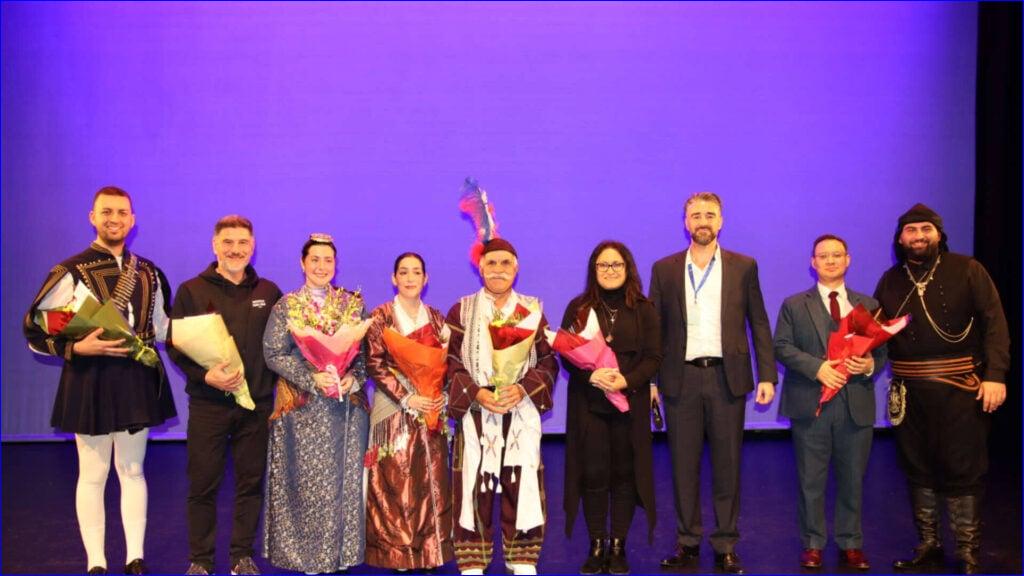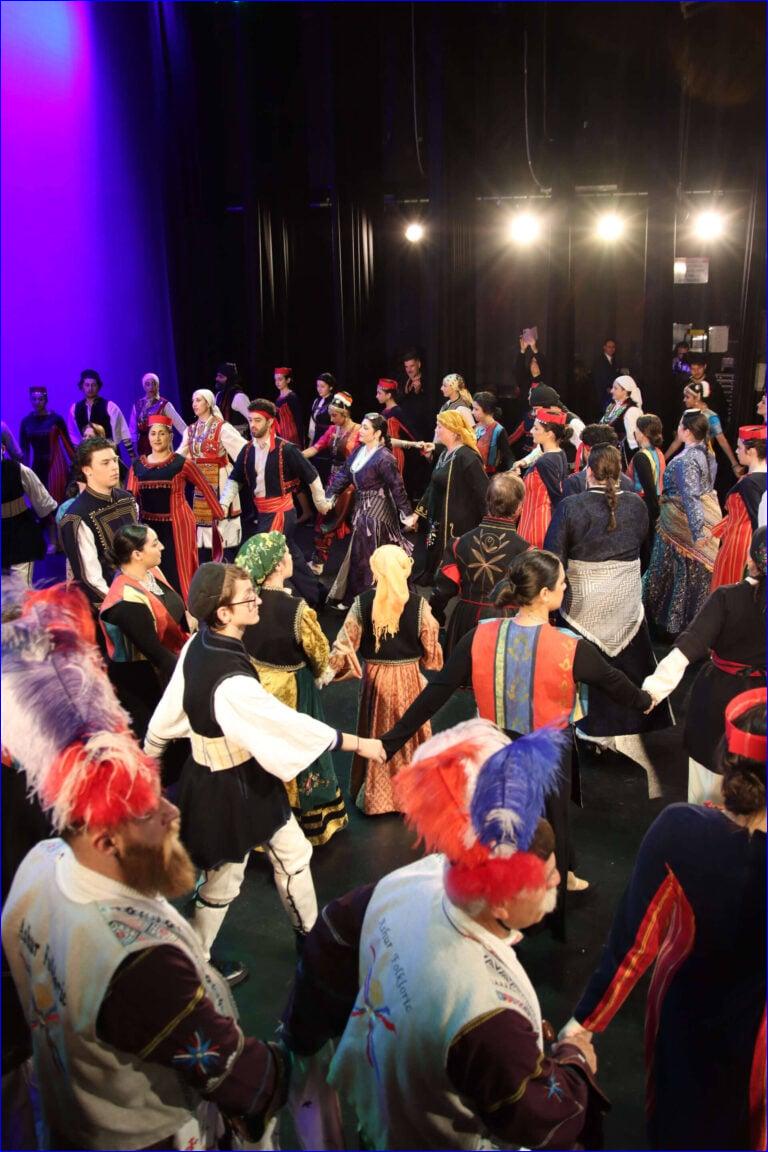


 Dean Kalimniou)
Dean Kalimniou)
The production, supported by the Victorian Multicultural Commission, combined narration, historical reenactment, music, and traditional dance to explore the legacy of Alexander the Great through a multicultural lens. Audiovisual sequences directed and produced by Stefanidis accompanied the performance and added visual context to Kalimniou's script.
Structured as a series of monologues delivered by historical figures, from Aristotle and Olympias to Babylonian scribes and Indian rulers, the work presented Alexander not solely as a military leader, but as a figure of philosophical and cultural connection. The production avoided conventional narrative arcs, instead offering a reflective and layered interpretation of Alexander's impact across regions and cultures.
The audience responded warmly to the dance performances by the Armenian, Assyrian, Indian, Pontic, Pan-Macedonian, and Florinian Aristotelis groups. A combined performance to Makedonia Xakousti closed the evening on a high note, earning sustained applause.
One of the most distinctive moments came when Kalimniou performed the same anthem on the Chinese erhu, highlighting Alexander's broad historical reach and the intercultural ethos of the event.

Reflecting on the evening, Peter Stefanidis said: "We aimed to present more than a story about Alexander--we wanted to create an experience that reflects his broader vision. Working with communities from Armenian, Assyrian and Indian backgrounds allowed us to find shared threads in our histories."
Alexander's Journey served as both a cultural presentation and a gesture of cross-community engagement, inviting audiences to consider the enduring relevance of historical narratives when interpreted through shared artistic expression.

or register to post a comment.